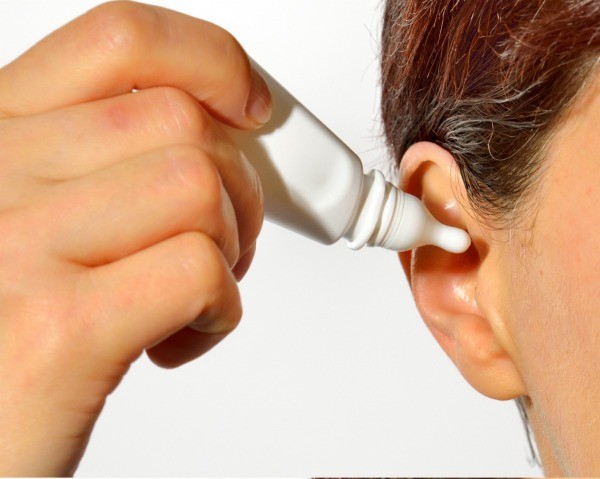Hydrogen peroxide (also known as hydrogen dioxide or H2O2) is a common household item found in medicine cabinets and is usually used for cleaning wounds. It is actually a natural substance produced as a by-product from many cells of the body; however, bodily enzymes such as catalase metabolize hydrogen peroxide, breaking it down to water and oxygen which prevents the formation of harmful free radicals.
Everyone produces ear wax or cerumen naturally. This is an oily substance that is formed by the glands in the outer ear canal and which may help to reduce the risk of infection in the ear or the entry of insects, dust or water. People have different amounts and character of wax in their ears, some may have wet or oily wax while others may have dry ear wax. Some people produce little ear wax but others may produce more, causing problems like ear plugging that can lead to reduced hearing due to a feeling of fullness in the ear. The risk of infection is also great when there is too much ear wax since it can trap bacteria, leading to itchiness or pain. A doctor who examines the ear may not be able to see what is going on in the inner parts of the ear, making examination difficult.
Removing Excess Ear Wax with Hydrogen Peroxide

When it comes to home remedies for ear wax removal hydrogen peroxide can be of great help. But before you try, make sure you do not have an ongoing ear infection or a perforated eardrum. Do not use hydrogen peroxide on sensitive skin; use normal saline solution or warm water instead.
Preparation
Ear wax removal kits are sold over-the-counter, but one can always use hydrogen peroxide from your medicine cabinet at home to reduce ear wax build-up. Before anything else, prepare the following items: 3% hydrogen peroxide, cotton balls, cotton swabs, a towel, olive oil, warm water, a medicine dropper, a bulb aspirator and a couple of bowls.
Warm the hydrogen peroxide and olive oil bottles in a bowl of warm water to make ear wax removal more comfortable.
Procedure
For small amounts of ear wax, one may do a short and easy procedure by just dipping a cotton swab or Q-tip in a small amount of hydrogen peroxide and using this to clean around the outer ear canal. Take care not to push the cotton bud deep into the ear canal since this may push the wax deeper, leading to impaction.
To remove wax build-up, follow these steps:
- Set aside several minutes (at least 30) of your time for the entire procedure.
- Draw two to three drops of warm oil into the dropper.
- Tilt the head to one side so that the ear being treated faces the ceiling above.
- Apply the oil into the first ear canal, taking care not to push the tip of the dropper deep into the canal. Wait a few minutes.
- Next, draw 3-4 drops of hydrogen peroxide using the dropper. Place a towel on the shoulder of the same side as the ear being treated. This will absorb any drips that may come out of the procedure.
- Apply the warm hydrogen peroxide on the same ear and allow the solution to stay for 10-15 minutes. You will hear bubbling sounds and it may feel ticklish or itchy.
- When the bubbling has stopped, drain the ear by flipping the head towards the shoulder with the towel. Softened ear wax may be found draining.
- Repeat the procedure on the other ear.
- For impacted ear wax, the procedure described above may be repeated multiple times a day, placing a cotton ball in the ear to prevent dripping. To drain the oil and hydrogen peroxide from the ears, draw some warm water using the bulb aspirator. Tilt the head over a sink and position the tip of the bulb aspirator 45o towards the ear being treated. Gently squeeze the bulb and squirt water into the ear to remove the loosened ear wax in the ear. Dry the outer ear with a cotton swab.
Caution
For ear wax removal hydrogen peroxide can help. However, it is worthwhile to remember that these ear cleaning procedures should not be done when one has an ear infection, severe ear pain or hearing impairment. Furthermore, hydrogen peroxide may not be recommended for people who have sensitive skin. One should use dilute hydrogen peroxide which is not stronger than 3%.
Make sure to dry the outer ear thoroughly after irrigating with water, since bacteria can breed in it.
Finally, if these procedures do not clear out the build-up of wax in your ears, seek professional help from an ear, nose and throat (ENT) doctor. One should also consult a doctor when symptoms such as earache, fluid drainage, hearing loss, dizziness, fever, or vomiting are experienced.
For more remedies to safely get rid of excessive ear wax read Ear Wax Removal.
